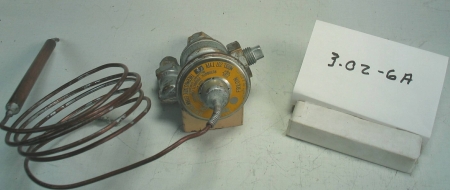Refrigerant Flow Controls – Commercial
An amazingly compact, mid capacity, mid to late 20th century, thermostatic expansion valve designed to meet the needs of an increasingly wide range of packaged, compact, commercial refrigeration applications, for methyl chloride and Freon 12 refrigerants, Model 207, Automatic Products Co., Mil., Circa 1945 [1 of a set of 2, see ID#191]
Technical Significance:
Smaller than the Detroit Lubricator model 673 [see ID#187 and 188] in similar capacity range, this valve would set a new standard of compact, precision operation for the Canadian market place. Engineered by Automatic Products it would help to make possible a new generation of packaged, compact, commercial refrigeration appliances for confectioneries, food stores and similar applications.
In response to the buoyant market for TX valve technology a number of manufacturers, including Detroit Lubricator, Mayson, Automatic Products, Sporlan and Danfoss, among others entered the field in the late 1930’s and 40’s. They produced a remarkable range of design configurations and capacities for different refrigerants and cooling applications – in low temperature, commercial and air conditioning ranges.
The AP207, generally representative of the period, was engineered with a range of interchangeable orifices, variously for methyl chloride, F12 and sulfur dioxide refrigerants, for low, commercial and air conditioning applications, over the range of 1/4, 1/3, 1/2, and 1 ton capacities.
Industrial Significance:
With 60″ capillary line and 3/8″ bulb, wide range of orifice sizes, adjustable superheat feature and built in liquid line screen, this compact valve would help to make possible an explosion of refrigeration and air conditioning applications in the latter part of the 20th century.


